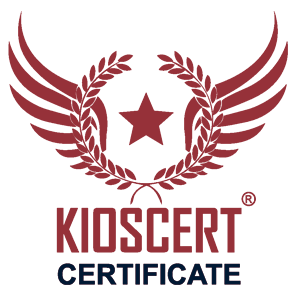
Halal & ISO 22000 Integration: Dual Assurance Through a Single Audit
Combining Halal requirements with the ISO 22000 Food Safety Management System under one umbrella is a strategic move that provides businesses with market credibility and audit efficiency. This integration is based on risk-based thinking through hazard analysis, shared prerequisite programs (PRPs), and unified record-keeping and verification mechanisms. The outcome is a single audit cycle that satisfies both standards while minimizing duplication and documentation burden.
Operational PRPs (OPRPs) and Halal Critical Control Points (CCPs)
Within ISO 22000, OPRPs control significant hazards that do not rise to the level of Critical Control Points. When integrating Halal, these OPRPs are expanded to address Halal integrity risks. This means one control step can simultaneously satisfy both food safety and Halal assurance through unified monitoring and verification.
- Raw Material Acceptance: Verify Halal certificates, match lot numbers, check for suspicious additives.
- Recipes & Formulas: Review animal-derived ingredients, alcohol-based solvents, or enzymes.
- Cleaning & Changeover: Use Halal-approved detergents, apply rapid residue tests after cleaning.
- Packaging & Labeling: Ensure proper Halal logo use and avoid mislabeling.
- Storage & Transport: Enforce segregation of Halal/non-Halal products and verify transport hygiene.
Line Segregation: Cleaning, Validation and Records
To protect Halal integrity, production lines must be segregated either physically (separate equipment and storage) or temporally (dedicated production runs). In the case of time-based segregation, cleaning and validation protocols become mandatory.
- Use only Halal-compliant cleaning agents.
- Perform visual inspections and rapid protein/fat residue tests.
- Document every cleaning activity linked to production lots.
Supplier Approval and Declaration Verification
Suppliers represent the most sensitive link in the chain. Supplier approval must therefore cover Halal certification alongside food safety credentials.
- Initial Evaluation: Collect supplier questionnaires and certificates.
- On-site Audit: Inspect high-risk suppliers with integrated checklists.
- Sample Testing: Confirm both food safety and Halal compliance through lab analysis.
- Ongoing Review: Track validity of Halal certificates and declarations.
Internal Audit Plan: Combined Checklist
Internal audits are the backbone of system verification. In integration, one combined checklist can be used for both ISO 22000 and Halal requirements:
- Raw material intake and certificate verification.
- Cleaning and validation procedures.
- Storage and transport segregation practices.
- Document management and version control.
- Training completion and competency checks.
Training Matrix: Role-Based Competence
System sustainability depends on staff competence. A training matrix defines what each role must know and practice:
- Operators: Personal hygiene, CCP/OPRP monitoring, product changeover protocols.
- Quality Control: Sampling, testing, Halal certificate verification, record-keeping.
- Procurement: Supplier approval and Halal document tracking.
- Warehouse & Logistics: Segregated storage and transport validation.
- Management: Risk-based oversight, KPI monitoring, integration strategy.
Document Hierarchy and Version Control
A solid document control system is essential. The structure should be Policy → Procedure → Work Instruction → Records. Both Halal and ISO 22000 requirements are integrated into the same document with labels (H for Halal, F for food safety, HF for shared).
- Apply version numbering (v2.1.0).
- Require signatures from both Halal and Quality Managers.
- Archive in tamper-proof formats (PDF/A).
- Track expiry dates of external supplier certificates.
Corrective and Preventive Action (CAPA) Scenarios
A unified CAPA system addresses root causes and prevents recurrence. Typical scenarios include:
- Expired Certificate: Reject lot and implement certificate tracking system.
- Cleaning Failure: Repeat cleaning, revise SOP, add rapid verification test.
- Labeling Error: Recall labels, enforce dual approval before printing.
- Mixed Storage: Reorganize warehouse and implement coded shelving.
Annual Audit Schedule Synchronization
The annual schedule should combine both Halal and ISO 22000 audits into one integrated cycle:
- January: Risk assessment update and training plan.
- February: Internal audit round 1.
- March: Supplier audits.
- June: Management Review.
- July: External ISO 22000 audit.
- November: External Halal audit.
- December: Year-end CAPA review and planning.
Top Management Reporting and KPI Set
Unified reporting provides leadership with a clear performance snapshot. Recommended KPIs include:
- OPRP/CCP compliance rate (target ≥98%).
- Cleaning validation success rate (target ≥99%).
- Supplier compliance score (valid Halal + food safety certificates).
- Label accuracy rate (target ≥99.5%).
- CAPA closure median time ≤30 days.
- Training completion rate ≥98%.
- Traceability test success rate ≥99%.
- Customer complaint / recall frequency ≤5 PPM.
- Major audit findings = 0.
These KPIs should be displayed on a dashboard with traffic light coding (green–yellow–red). Red status triggers automatic CAPA initiation and management attention.
